Body horror is a smaller genre under the umbrella of Horror that deals in attacks and atrocities committed on the human body. These inflictions are typically physical or psychological in nature, though they carry a strong emotional resonance as well.
As we detailed in our History of Body Horror article, the reason the genre works so well is because it deals with universal themes and fears. Everyone is subjected to physical pain, disease, aging, and death – and so texts that incorporate these elements are both relatable to some degree as well as terrifying. Even when the elements are stretched to bizarre degrees, there is an underlying current of familiarity.
Writers who work in body horror are particularly adept at cutting to the nerve of our human fragility in all its various forms. They have an ability to weave very real pain and fear into their fiction in ways that are surprising and unnerving. And so, here is a short list of body horror authors you should be reading right now!
Zac Thompson
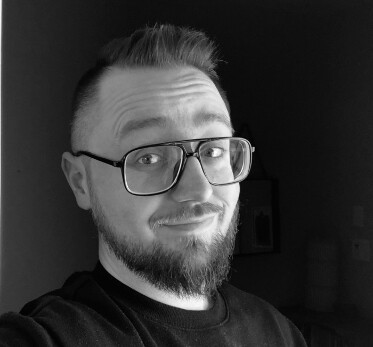
Zac Thompson is a writer born and raised on Prince Edward Island, Canada. He’s written titles like Marvelous X-Men, Cable, and X-Men: Black for Marvel Comics. Along with indie books such as Her Infernal Descent, Relay, and The Replacer. In 2019, Zac became the showrunner of the Age of X-Man universe at Marvel Comics. His critically acclaimed miniseries, Come Into Me, was called the best horror comic of 2018 by HorrorDNA. His debut comic series, The Dregs, was called “lowbrow brilliant” by New York Magazine. His novel, Weaponized, was the winner of the 2016 CryptTV horror fiction contest.
1. Tell us a bit about yourself and what got you started in horror writing?
Hey, I’m Zac Thompson. I was born and raised on Prince Edward Island, which is the smallest province in Canada. Naturally there wasn’t much to do around here as a kid. So I became obsessed with horror at an early age. My brothers and I would bike to the local video store and rent a pile of horror movies long before we should’ve. Regular triple features of insanity basically rewired my brain by the time I turned ten. That led to discovering horror novels, and horror comics… and before long writing for the website Bloody-Disgusting. Writing about horror led to this craving to create my own horror.
I went to film school with the intent to graduate and make my own horror movies. While there, I met my (often) writing partner Lonnie Nadler. We were both writing for VICE at the time and started to see some of the underlying horror of the city we lived in: Vancouver BC. We built out the concept for The Dregs (my first piece of published fiction) with a local artist Eric Zadwadzki. We pitched it as a noir about a city that literally cannibalizes its weakest citizens and we’re told routinely that it was “unmarketable”. Luckily horror is a genre that thrives in the “unmarketable” space and we didn’t give up. After years of looking for a publisher we were lucky that Black Mask Studios saw merit in the transgression of the work.
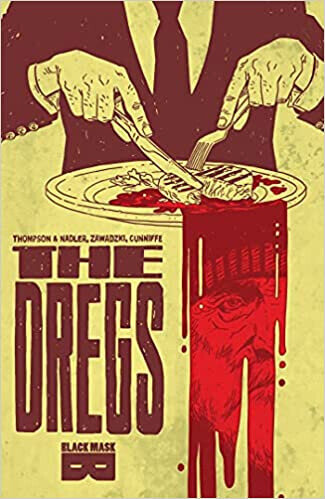
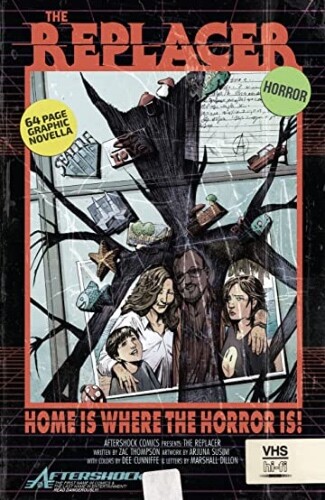
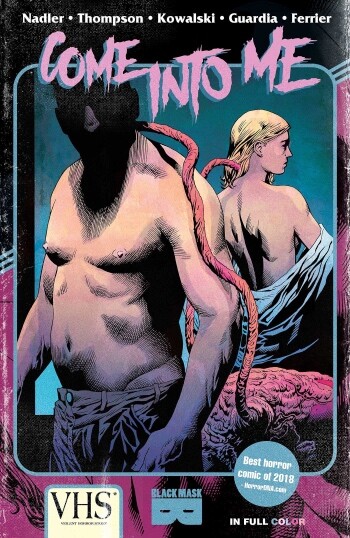
2. We talk to a fair amount of new writers. What tips would you give yourself if you could go back to when you started based on what you know now?
Oh man, this is such a multilayered thing. First, I’d say fully understand your contracts before signing them. Pay a lawyer to go over it, I promise it’s worth it. It can be a really exciting prospect to be offered money in exchange for writing a story. But selling the publishing rights always comes with several attached strings. Ask questions until you understand the terms of your payment, who retains ownership of the story, and if/when you’ll ever retain the publishing rights. Set boundaries early in a relationship and reinforce them if you have to. You shouldn’t work for free and you’re not part of a “family” – anyone who says that kinda stuff to you is probably trying to exploit your labour.
3. What are some of your favorite aspects of the body horror genre?
I love every type of horror but there’s something so universal to me about being afraid of your own body. There’s this primal part of us that understands we’re in this big sack of meat, filled with a complex network of organs that complete complicated processes to keep us alive but we don’t think about it. Until we’re sick. When we feel pain in our bodies it’s this registration that we’re inside this finite thing that can fail us, betray us, even kill us. There’s something so unnerving about that. Walking around every day knowing your sentience depends on some many squishy, fragile things – you can’t escape that. It takes everything about the horror genre and forces it to be entirely localized inside you. There’s no escaping body horror. Even if you cut out the aberration, you have to live for the rest of your life fearing it might come back.
4. What are your top three favorite body horror books (and/or films)?
So this is just off the cuff, without thinking about it too much because I’ll obsess over this if given the time.
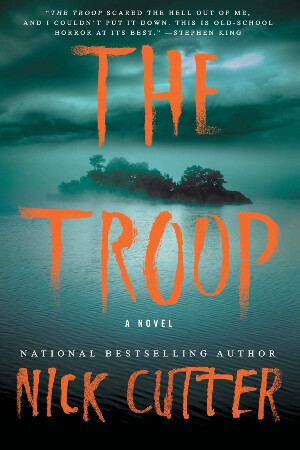
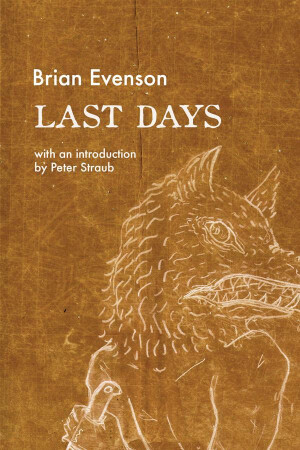
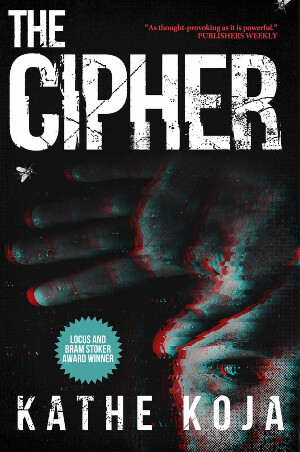
THE TROOP – Nick Cutter crafts a weird Lord of the Flies meets Cronenberg mashup that really chilled me to my core. Parasitic alien tapeworms and sadistic little boy scouts. It gets pretty gnarly. Plus it takes place off the coast of Prince Edward Island – so bonus points there.
LAST DAYS – I’m currently on a huge Brian Evenson kick. This is a brutal horror noir with razor sharp prose. A one handed detective is hired by a strange cult known as The Brotherhood of Mutilation to look into the death of one of their one. Unapologetically weird and comes at you with such precision that you wince with every lopped limb. There’s so much amputation in this…it’s actually insane.
THE CIPHER – Kath Koje’s brilliant weird horror masterpiece just needs to be experienced. Bodies do things I never imagined possible in this.
If you’re interested in learning more about Zac Thompson, check out his website at www.zacthompson.substack.com. You can also follow the author on Twitter (@ZacBeThompson), Instagram (@zacbethompson), and Goodreads (@Zac_Thompson). Finally, to purchase books check out the author on Amazon.
Hailey Piper
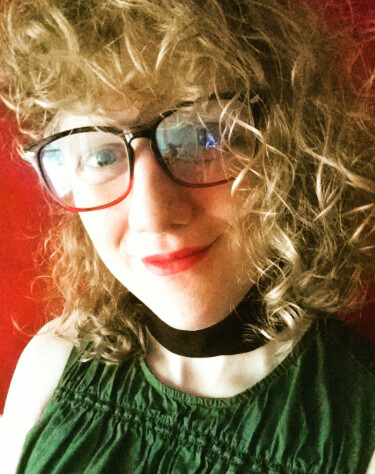
Hailey Piper writes horror and dark fantasy, and is a member of the Horror Writers Association. She is the author of Queen of Teeth, The Worm and His Kings, Unfortunate Elements of My Anatomy, Benny Rose the Cannibal King, and more. She is an active member of the Horror Writers Association, and her short fiction appears in publications such as Year’s Best Hardcore Horror, The Arcanist, Flash Fiction Online, Daily Science Fiction, Tales to Terrify, Dark Matter Magazine, Planet Scumm, and many more. She lives with her wife in Maryland, where she haunts their apartment making spooky noises.
1. Tell us a bit about yourself and what got you started in horror writing?
I’ve always loved horror: monsters, creatures, etc. Anything like that was guaranteed to catch my interest, so once I started writing as a kid, it only made sense I’d jot stories of dinosaurs, werewolves, and aliens. I like to think my writing has grown a little more sophisticated since I was a little kid writing those short stories, but I still love monsters and always will.
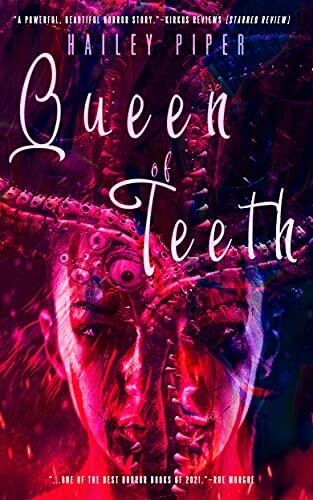
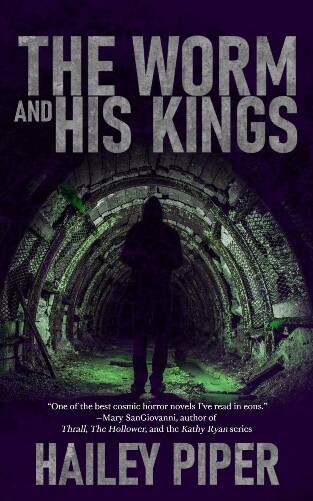
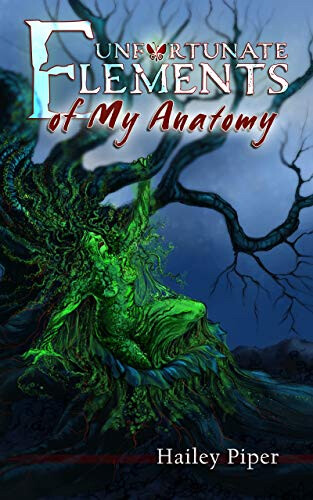
2. We talk to a fair amount of new writers. What tips would you give yourself if you could go back to when you started based on what you know now?
I think as a child I did exactly what I was supposed to do–let my imagination run wild and don’t worry too much. What I would tell the later writer of me is to remember that, keep it close. It took me years to remember to write and not worry over what else was going on. There’s plenty of time in revisions to figure anything else out, but in the writing itself, we need to be free.
3. What are some of your favorite aspects of the body horror genre?
As with many elements of horror, one of my favorite aspects of body horror is imagination. The subgenre offers endless possibilities and opportunities both for exploring the terrible things inflicted on our bodies or that our bodies inflict on us, as well as taking abstract ideas and applying them physically. We can learn a lot about the horror of those concepts when giving them root in the human body.
4. What are your top three favorite body horror books (and/or films)?
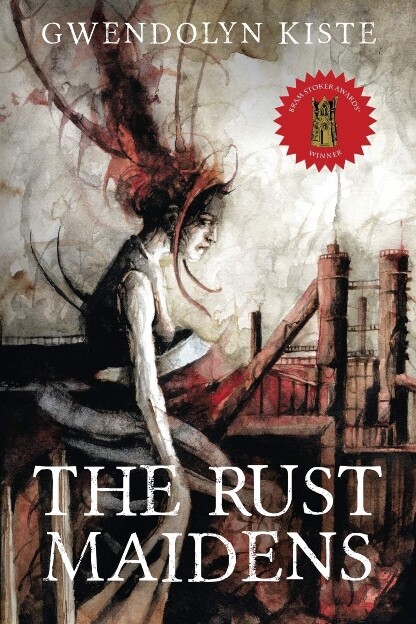
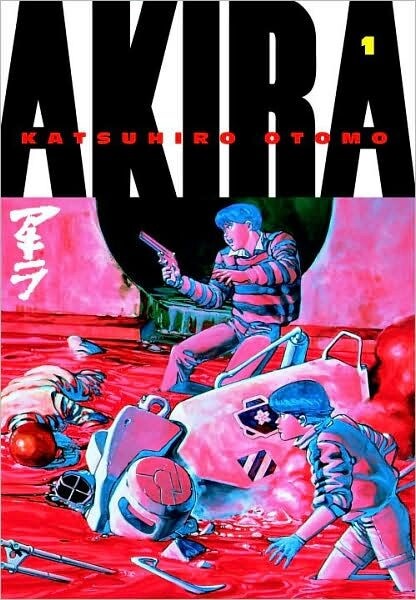
I can’t say top over all, but three that I love would be The Rust Maidens by Gwendolyn Kiste (perfect example of taking an abstract concept, such as the deterioration of an entire region and its people, and applying it to the human body), The Cipher by Kathe Koja (which reaches out and works its own category-defying magic), and Akira, which adds a psychic element in how far the human body can be pushed.
If you’re interested in learning more about Hailey Piper, check out her website at www.haileypiper.com. You can also follow the author on Twitter (@HaileyPiperSays), Instagram (@haileypiperfights), and Goodreads (@Hailey_Piper). Finally, to purchase books check out the author on Amazon.
Eric Larocca
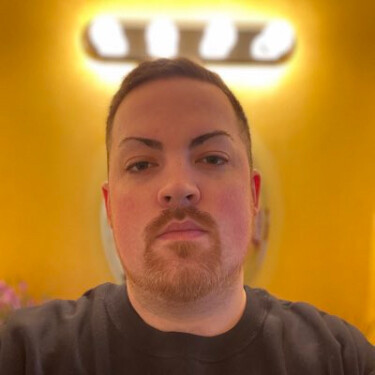
Eric LaRocca is the author of several works of horror and dark fiction, and his work has appeared in various literary journals and anthologies published in the US and abroad. He is also the author of several plays that have been produced across the country. Eric is represented by Ryan Lewis/Spin a Black Yarn for Film and Television.
1. Tell us a bit about yourself and what got you started in horror writing?
I began my writing journey actually writing for theatre. I worked primarily as a playwright for a number of years, and I was fortunate enough to have several of my original plays performed by a local troupe of actors in my hometown of Kent, Connecticut. Despite my love of theatre, I had always possessed a distinct love of the macabre. I was always drawn to works that were inherently dark. I worshipped the work of playwright Tennessee Williams and his work led me to other writers. Eventually I sought out the dark delicacies commonly found in horror fiction and began to educate myself as much as possible. I also need to credit my mother for encouraging my obsession with horror as I became really invested in the genre when she first showed me the film, Creature from the Black Lagoon. Ever since I saw that film, I was totally engrossed in the genre and did all I could to savor as much horror content as possible.
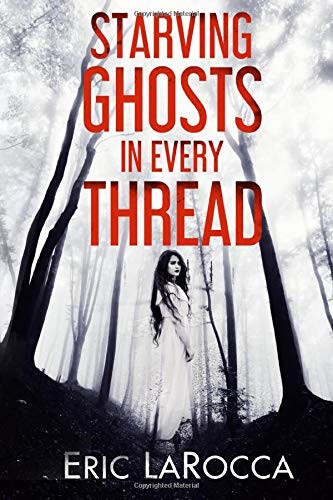
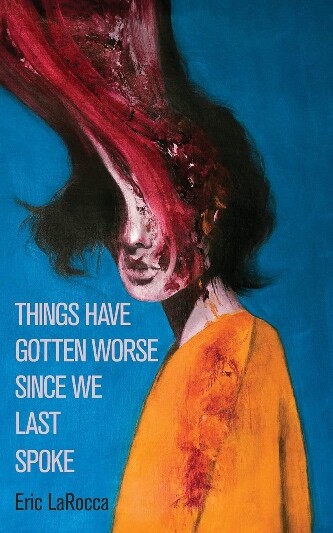
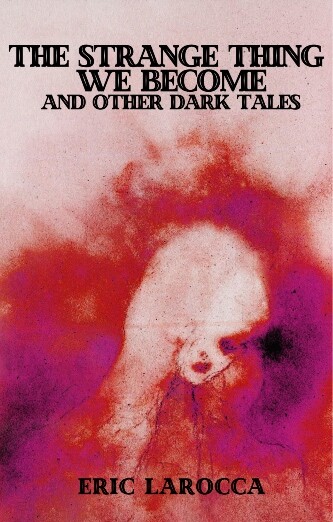
2. We talk to a fair amount of new writers. What tips would you give yourself if you could go back to when you started based on what you know now?
I think I would caution my former self to be prepared for the criticism, the negativity, and the hatred that writers are often bombarded with. Obviously, there’s no way to mentally prepare for that level of scrutiny and that kind of negativity, but I would simply urge younger writers to find something outside of writing that gives them pleasure. Also, most importantly, do not engage with trolls or haters. There are people on the internet who are actively seeking to start fights and to suck the energy out of people. Don’t feed them. Don’t give in to their negativity.
Another equally important word of advice I would offer my former self as well as newer writers is to take special care of your mental health. This is a very difficult business to navigate and if you’re not mentally equipped to deal with the rejections and the despair, your journey in writing and publishing will be spectacularly miserable. Take the effort to work on your mental health and make certain that you’re healthy and fit to withstand the barrage of rejections you’ll inevitably receive. To that end, do not give up. Keep writing and generating content. You never know when somebody is going to enter your life and ask: “What else ya got?”
3. What are some of your favorite aspects of the body horror genre?
I think what inherently draws me to body horror is the level of intimacy commonly found in the genre. It’s such a profoundly disquieting subgenre when you actually consider the topics and themes at play. Body horror has the ability to be as visceral and as brutal as possible because it’s the dissection of us, it’s the exploration of our bodies. Most importantly, the genre skillfully illustrates one of humankind’s most detrimental sufferings: entropy and decay. I think body horror is an exceptionally “truthful” subgenre of horror because it’s a reflection of ourselves–it’s an examination of our humanity and our weaknesses.
4. What are your top three favorite body horror books (and/or films)?
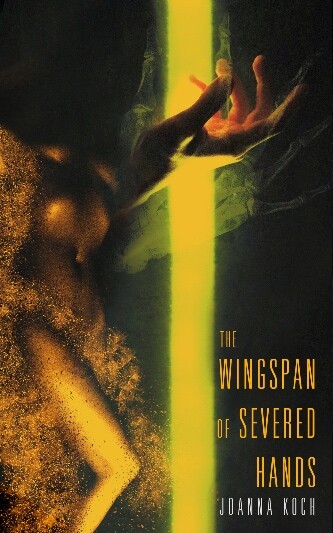
I’ve been impressed by so many works of fiction and film that cleverly subvert expectations and present body horror in a new, dynamic, and compelling way. I’m immediately reminded of Gwendolyn Kiste’s exceptional novel, The Rust Maidens. Kiste’s writing is so poetic, so lyrical–the horror is so uniquely grotesque and yet so profoundly gorgeous. I also think of Kathe Koja’s Skin as another exceptional example of compelling body horror. Koja’s writing is very unique and it’s a still that belongs entirely to her brand of fiction. Skin was my first introduction to her work, and I’ve been lacking in recent years to check out more of her catalog of fiction. However, Skin definitely stayed with me as a perfect example of dynamic and interesting body horror. Finally, Joanna Koch’s The Wingspan of Severed Hands is another work that I consistently look to for inspiration when executing body horror. Koch’s writing is so hallucinatory and otherworldly. Their command of language astounds me and the way in which they present the narrative in Wingspan is truly remarkable.
If you’re interested in learning more about Eric Larocca, check out his website at www.ericlarocca.com. You can also follow the author on Twitter (@ejlarocca), Instagram (@ejlarocca), and Goodreads (@Eric_LaRocca). Finally, to purchase books check out the author on Amazon.
Jonathan Winn
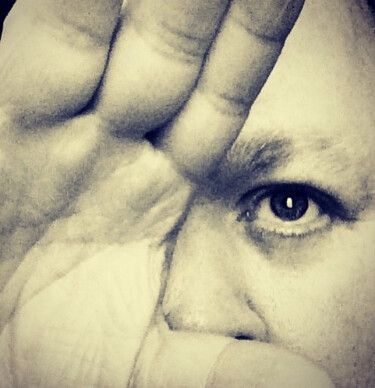
Screenwriter and author of Eidolon Avenue: The First Feast (“a great read…powerful and jarring” – Cemetery Dance, 2016), Martuk…the Holy (“A Highlight of the Year”), Martuk…the Holy: Proseuche (Top Twenty Best Horror Novels of 2014, Preditors & Editors Readers Poll), the recently released Eidolon Avenue: The Second Feast and Martuk…the Holy: Shayateen. In addition, his award-winning short story “Forever Dark” can be found in Crystal Lake Publishing’s Tales from the Lake, Vol. 2 and various essays are included in the non-fiction Horror 201: The Silver Scream and Writers On Writing, Vol. 2, both from award-winning Crystal Lake Publishing.
1. Tell us a bit about yourself and what got you started in horror writing?
In 2004 I wrote my first play and then my first feature script which, through friends, landed on several desks at DreamWorks. Then, in 2008, tired of the very real constraints of screenwriting, I decided to write a book. Easy enough, right? Well, fast forward four years (yes, four years) and Martuk…The Holy was finally released with its follow-up, Martuk…The Holy: Proseuche, arriving in 2014.
When it comes to body horror, I wasn’t aware that’s what I was doing until the release of Eidolon Avenue: The First Feast in 2016 and then Eidolon Avenue: The Second Feast in 2021.
As for what got me started, as I said, there was a desire to move away from the rules and regulations of screenwriting – I mean, not like writing fiction had rules and regulations, right? Oy vey – so the first book, Martuk, quite literally came to me while I was walking in my neighborhood in Greenwich Village. Washington Square Park, to be precise. The arc, the history, where and when it was placed, the Why of What this Martuk, an endlessly tortured immortal, does. I could barely make it home fast enough to get to the laptop.
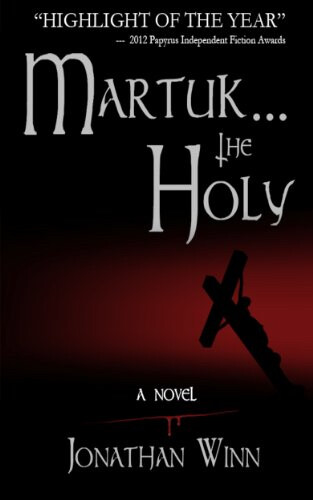
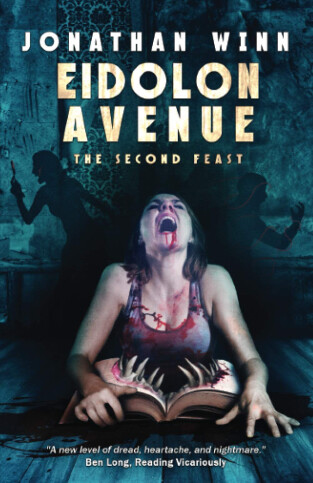
The first Eidolon came to me while I was weeding the garden. Or whatever it is you call it when you absentmindedly move dirt around with your foot while chatting on your cell. That book surprised me. I was working with an editor at the time who kept encouraging me to amp it up, make it more, make it worse, don’t be afraid to go really super-dark, don’t worry what people will think, just go all in. And what that did was create stories, bit by bit, rewrite by rewrite, that were radically different from what I’d done, what I thought I’d be doing and, more importantly, what I was aware I could do.
That first Eidolon opened up a whole new world of horror for me. One that encouraged the pushing of limits while rewarding unapologetic courage.
2. We talk to a fair amount of new writers. What tips would you give yourself if you could go back to when you started based on what you know now?
Perfection kills inspiration. Read that again: Perfection kills inspiration. So don’t worry about getting those first words right. Just get ‘em on the page and clean it up later.
Also, especially when you’re twisting the rules, testing boundaries and maybe writing outside the box, stick with it even when people are pelting you with doubt and burying you under constant reminders of what’s done and what isn’t done. I’ve come to realize that when you worry about what others might think, or if what you do will be liked, you run the very real risk of suffocating those parts of your creativity that make you stand out.
3. What are some of your favorite aspects of the body horror genre?
There’s a testing of limits I appreciate. And courage. I suspect those who write body horror tap into dangerously dark places in order to make what hits the page as impactful and memorable as possible. You have to be brave to face what you find there.
You also have to be super-smart. That’s what really floors me about this genre. It takes real skill to pull this off in a way that’s both believable and still fantastical (or horrifying). The Whys of What Happens in body horror don’t just land on the page. They’re artfully constructed, paced, and planned with a great deal of forethought and talent.
4. What are your top three favorite body horror books (and/or films)?
To be honest with you, the majority of my reading these days – and over the past several years, really – has been mainly research-based for various projects. So I’m embarrassed to admit that I don’t have a current list ready. My apologies.
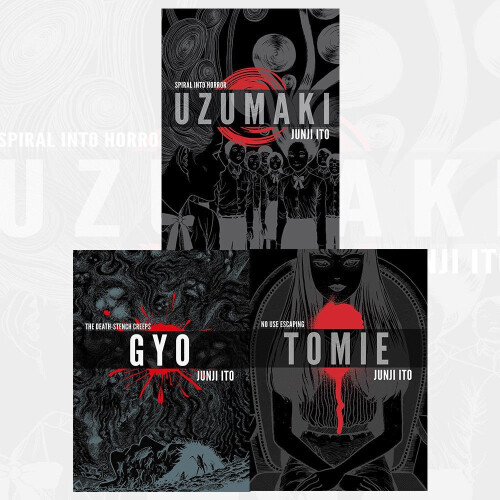
But I will say, although he’s manga and not a novelist, the work of Junji Ito (Japan’s Master of Terror) never ceases to amaze, unsettle, and, by its sheer genius and courage, nudge me to go a bit farther, to stretch my own boundaries, test my own limits. Blindingly surreal and twisted with rock-solid, unique storytelling coupled with unforgettable artwork, the man is a legend for a reason.
If you’re interested in learning more about Jonathan Winn, check out his website at www.martuktheholy.com. You can also follow the author on Twitter (@Jonathan_Winn), Instagram (@jonathan_winn), and Goodreads (@Jonathan_Winn). Finally, to purchase books check out the author on Amazon.
Gwendolyn Kiste
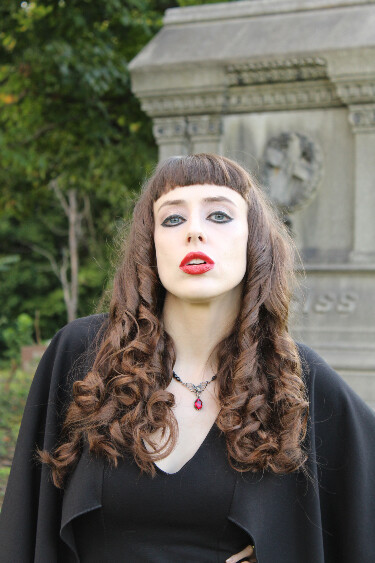
Gwendolyn Kiste is the Bram Stoker Award-winning author of The Rust Maidens, from Trepidatio Publishing; And Her Smile Will Untether the Universe, from JournalStone; the dark fantasy novella, Pretty Marys All in a Row, from Broken Eye Books; the occult horror novelette, The Invention of Ghosts, from Nightscape Press; and the folk horror novel, Boneset & Feathers, with Broken Eye Books. Her short fiction and nonfiction have appeared in Nightmare Magazine, Tor’s Nightfire, Vastarien, Black Static, Daily Science Fiction, Unnerving, Interzone, and LampLight, as well as Flame Tree Publishing’s Gothic Fantasy series, among others. Originally from Ohio, she now resides on an abandoned horse farm outside of Pittsburgh with her husband, two cats, and not nearly enough ghosts.
1. Tell us a bit about yourself and what got you started in horror writing?
I’m a horror and dark fantasy author based in Pennsylvania. My books include The Rust Maidens, Boneset & Feathers, And Her Smile Will Untether the Universe, and Pretty Marys All in a Row, among others. My work has won three Bram Stoker Awards and has been translated into five languages.
I’ve always loved horror. I grew up in a horror-centric family; Halloween and all things creepy were very much normal for us. I started writing little picture books in elementary school, and that led to a lifetime love of storytelling. Since I was always into weird stuff to begin with, my stories have constantly circled back around to horror. It’s definitely where my heart is and will always be. Every good part of my life has been related to horror in some way, from my favorite childhood memories with my parents to meeting my husband when we were both horror filmmakers to being a full-time horror author now. There’s definitely no better place for me in the world than in horror.
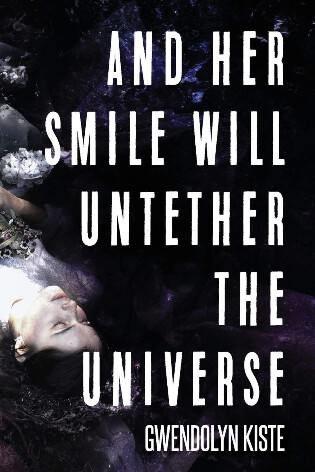
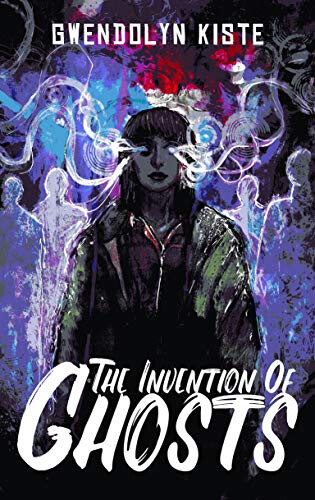
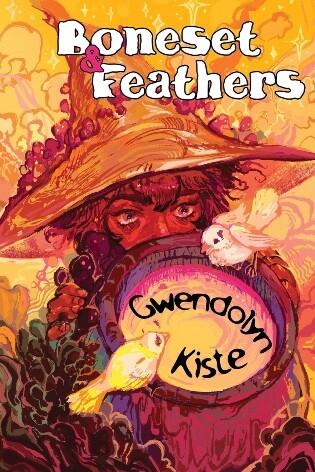
2. We talk to a fair amount of new writers. What tips would you give yourself if you could go back to when you started based on what you know now?
It probably sounds too simple, but the best advice is to just keep going. Keep writing, keep reading, and keep doing your best to have fun with it. That can be easy to forget; this industry can sadly be very cruel and competitive at times. But if you do your best to tune out that negativity and just have fun with writing, then that’s really the best way.
3. What are some of your favorite aspects of the body horror genre?
I love how at its core, body horror deals with themes of identity. It really gets down to the nitty-gritty of who we are as human beings. We often don’t think about it much, because we’re all living in them every day, but our bodies are truly horrifying landscapes. Things can go wrong with them that we never see coming, and our bodies do such weird things all the time. Strange aches and pains and sensations. Plus, from the time we’re born until the moment we die, we’re experiencing constant transformations. That’s part of who we are, and body horror can do a fantastic job of exploring that.
4. What are your top three favorite body horror books (and/or films)?
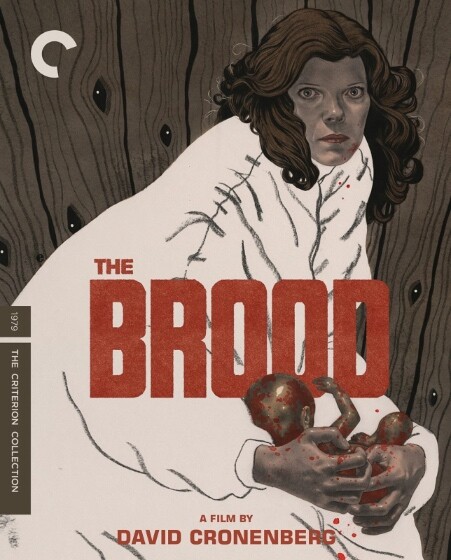
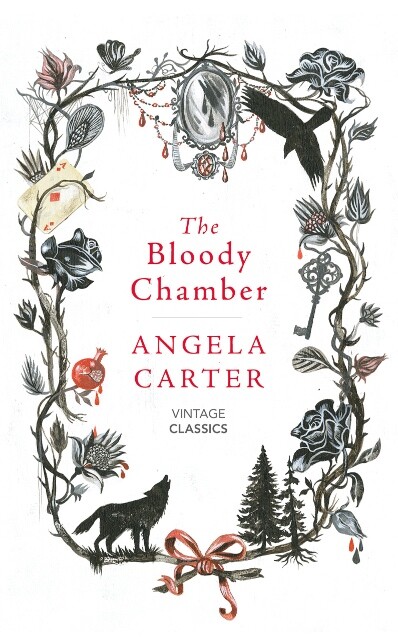
David Cronenberg’s The Brood is a big favorite of mine. Creepy kids in horror are always fantastic, and the little snowsuit-wearing creatures in The Brood are so great. However, what’s truly unforgettable is Samantha Eggar as their mother Nola. Her performance is seriously seared into my memory, and I love it so much.
The Ray Bradbury story, “Skeleton,” and specifically its television adaptation on Ray Bradbury Theater absolutely terrified me as a child. I was convinced for days after seeing that episode that someone would come along and try to steal my skeleton from inside my skin. shudders
I also love the way Angela Carter deals with body horror in her collection, The Bloody Chamber. She figured out how to take the strange and horrifying elements of fairy tales and tease out the body horror. From the werewolf transformations in her versions of Little Red Riding Hood to her reinventions of Sleeping Beauty and Beauty and the Beast, she really did some of the most remarkable—and remarkably beautiful—work in body horror of all time. Anytime I reread her fiction, it still takes my breath away.
If you’re interested in learning more about Gwendolyn Kiste, check out her website at www.gwendolynkiste.com. You can also follow the author on Twitter (@GwendolynKiste) and Goodreads (@Gwendolyn_Kiste). Finally, to purchase books check out the author on Amazon.
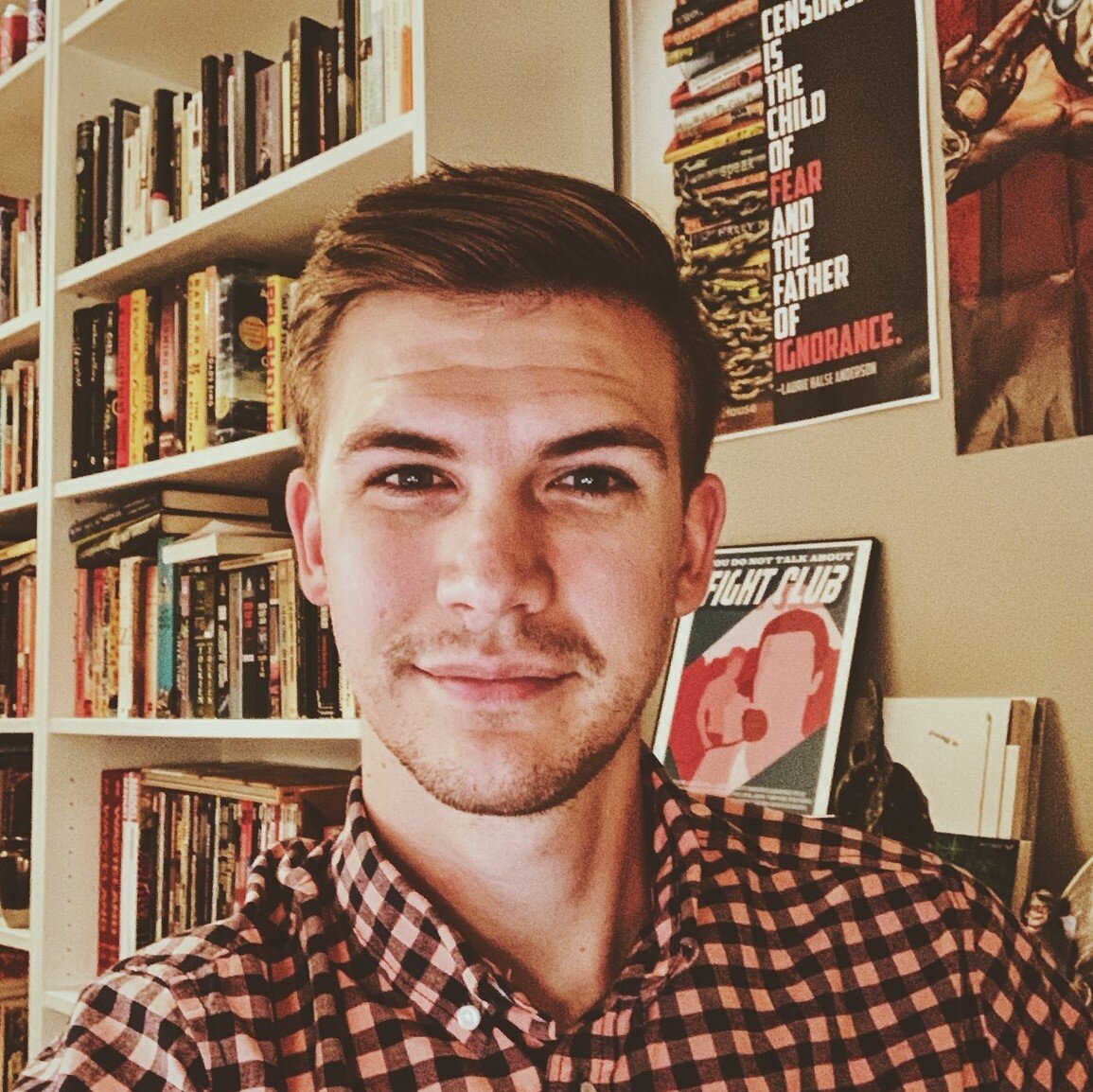
Ben’s love for horror began at a young age when he devoured books like the Goosebumps series and the various scary stories of Alvin Schwartz. Growing up he spent an unholy amount of time binge watching horror films and staying up till the early hours of the morning playing games like Resident Evil and Silent Hill. Since then his love for the genre has only increased, expanding to include all manner of subgenres and mediums. He firmly believes in the power of horror to create an imaginative space for exploring our connection to each other and the universe, but he also appreciates the pure entertainment of B movies and splatterpunk fiction.
Nowadays you can find Ben hustling his skills as a freelance writer and editor. When he’s not building his portfolio or spending time with his wife and two kids, he’s immersing himself in his reading and writing. Though he loves horror in all forms, he has a particular penchant for indie authors and publishers. He is a proud supporter of the horror community and spends much of his free time reviewing and promoting the books/comics you need to be reading right now!

